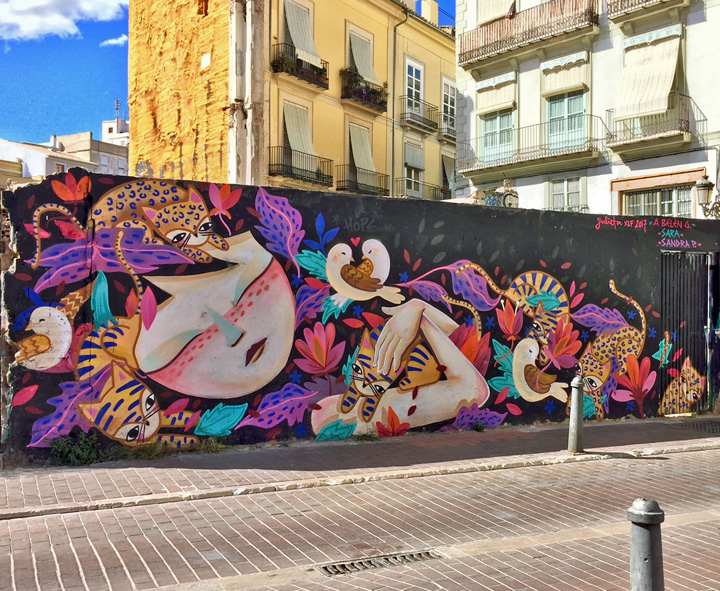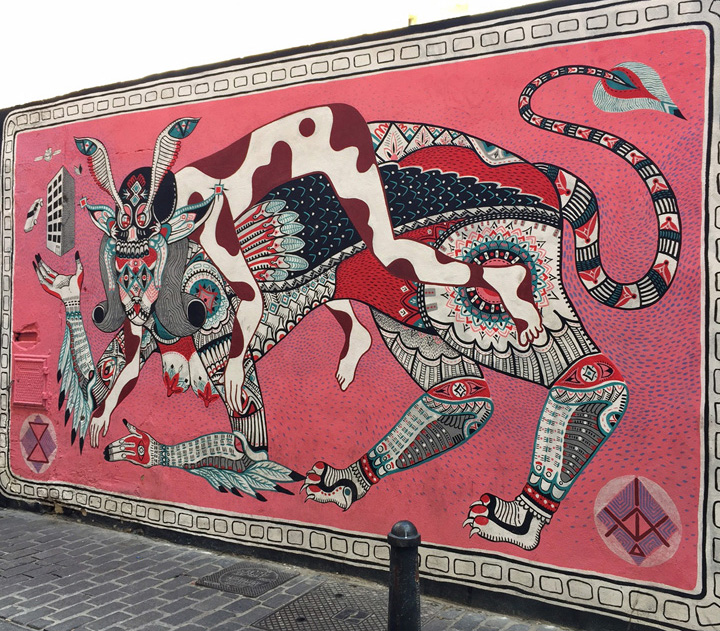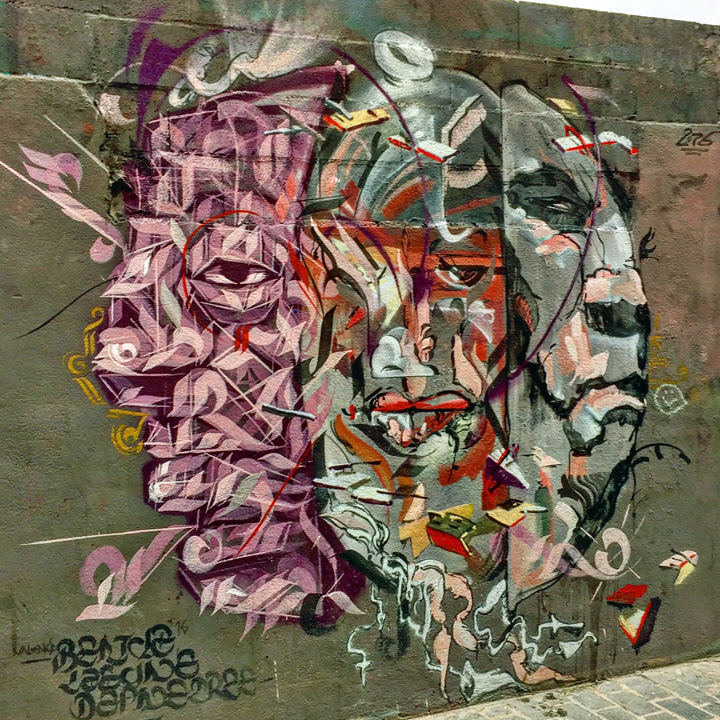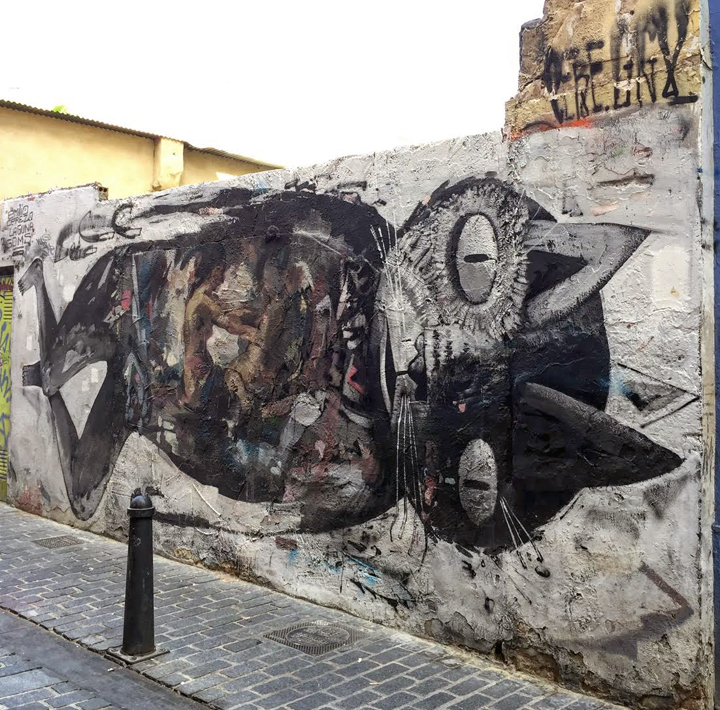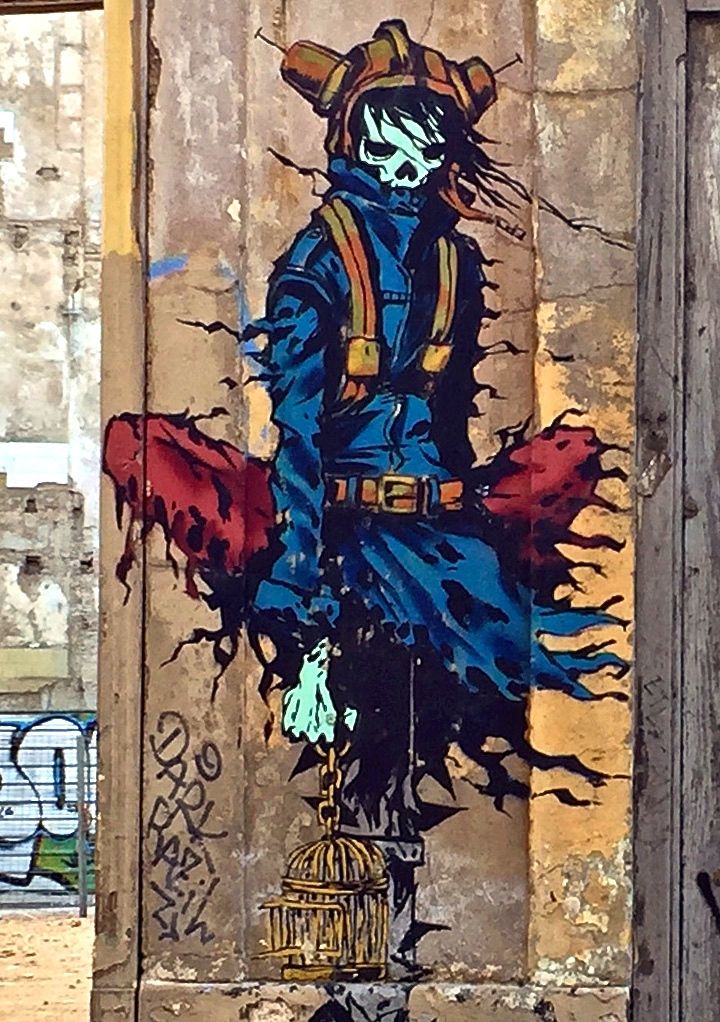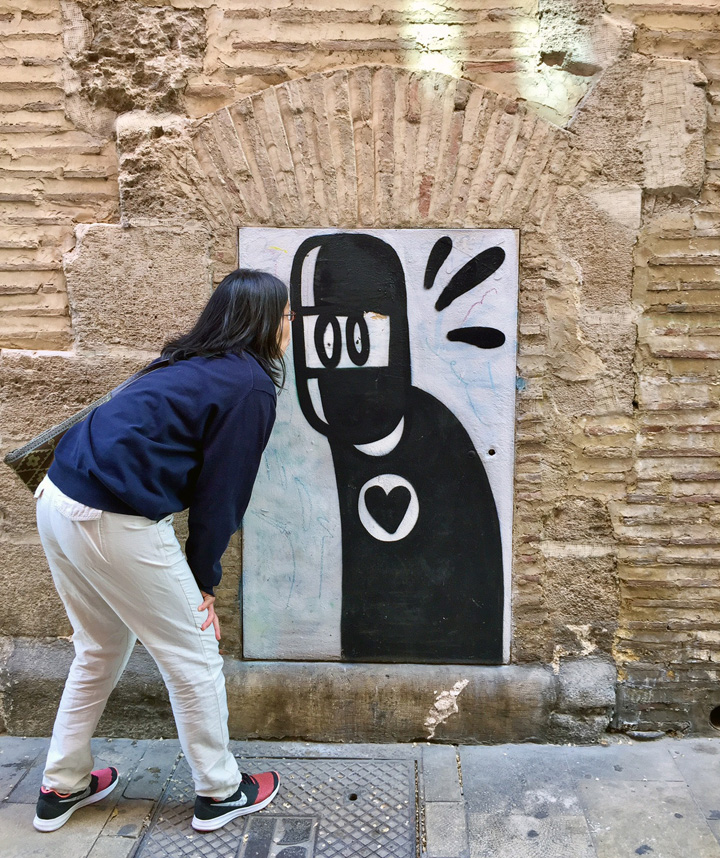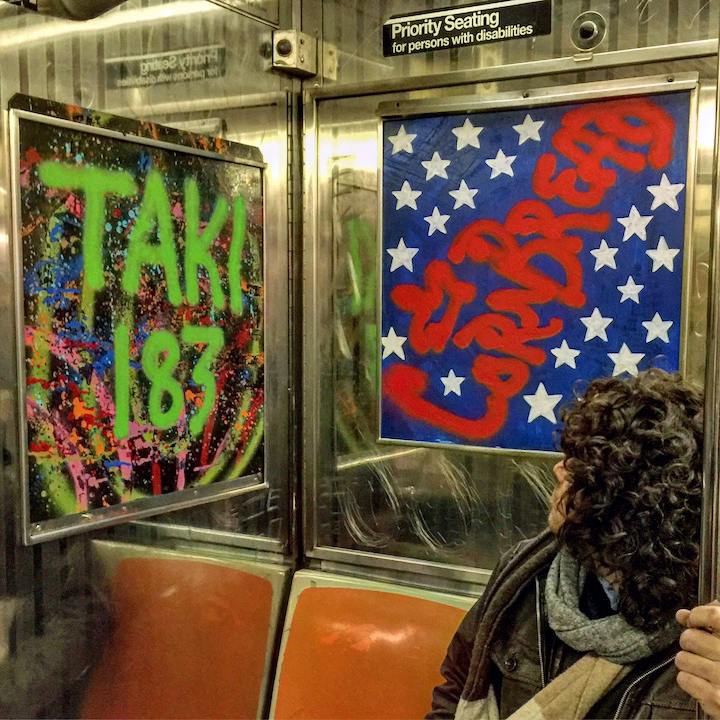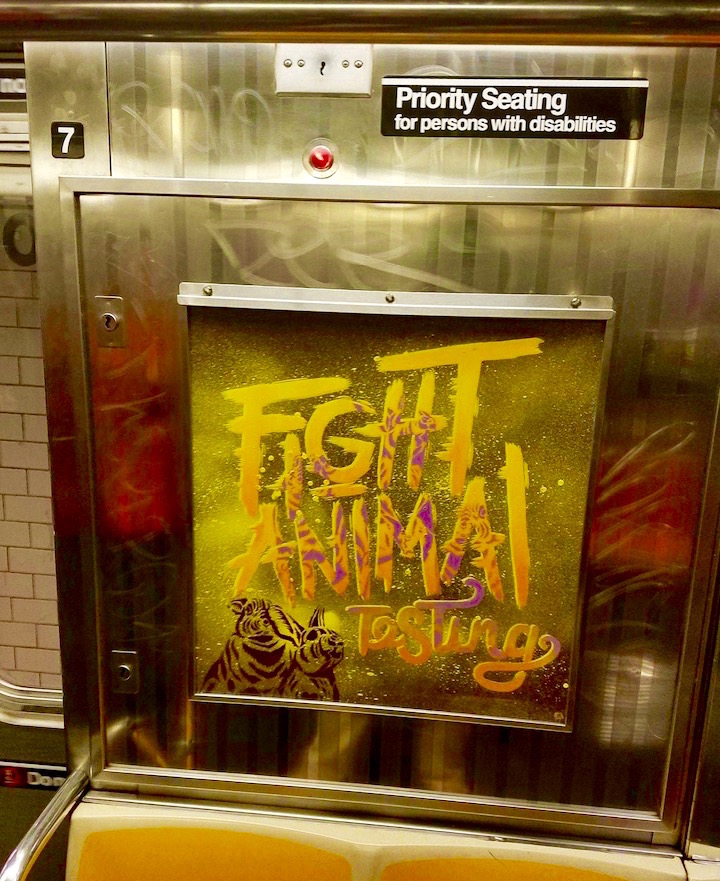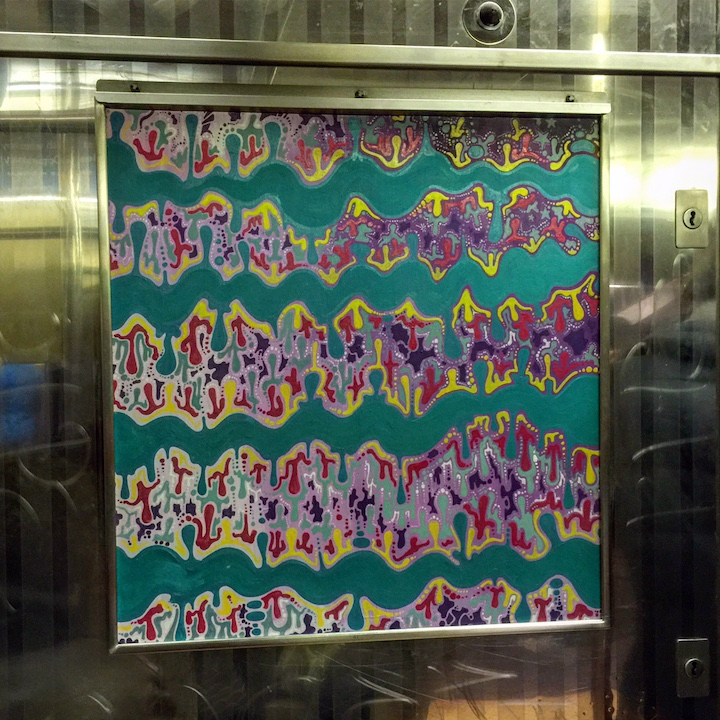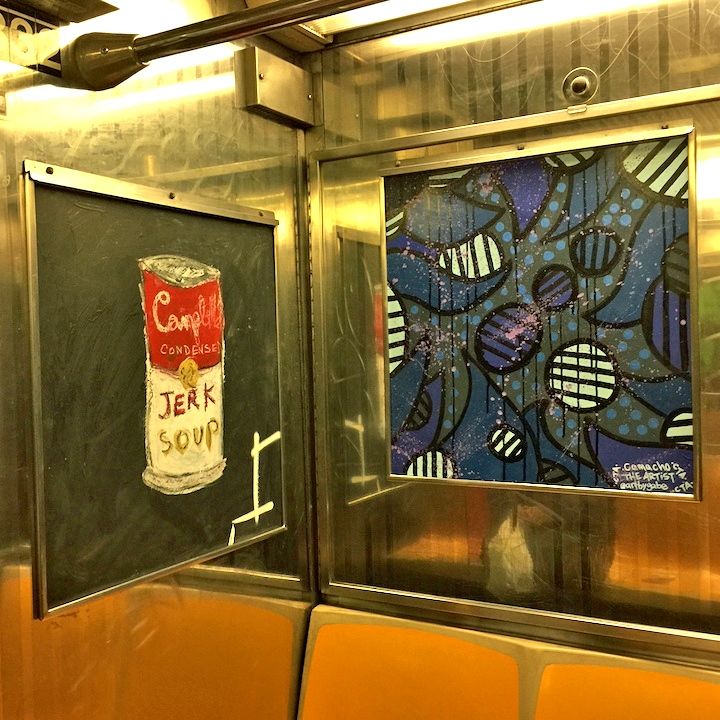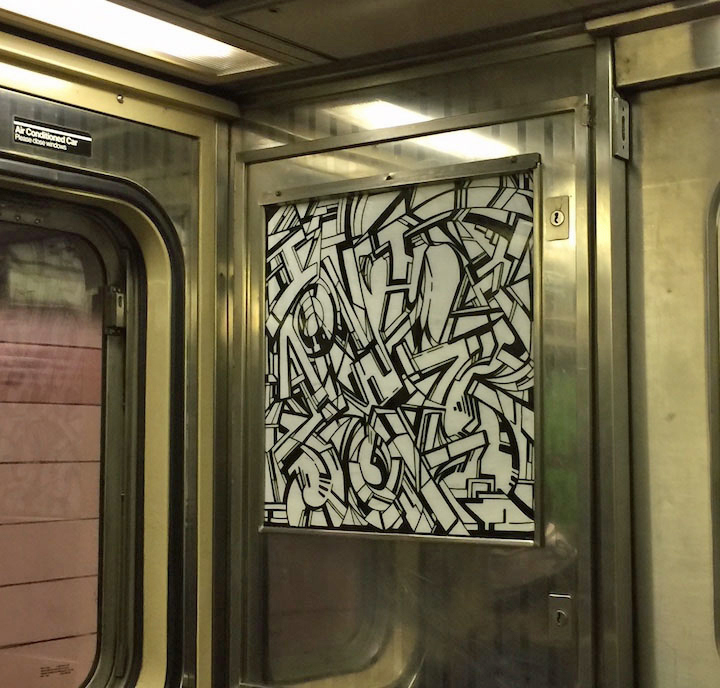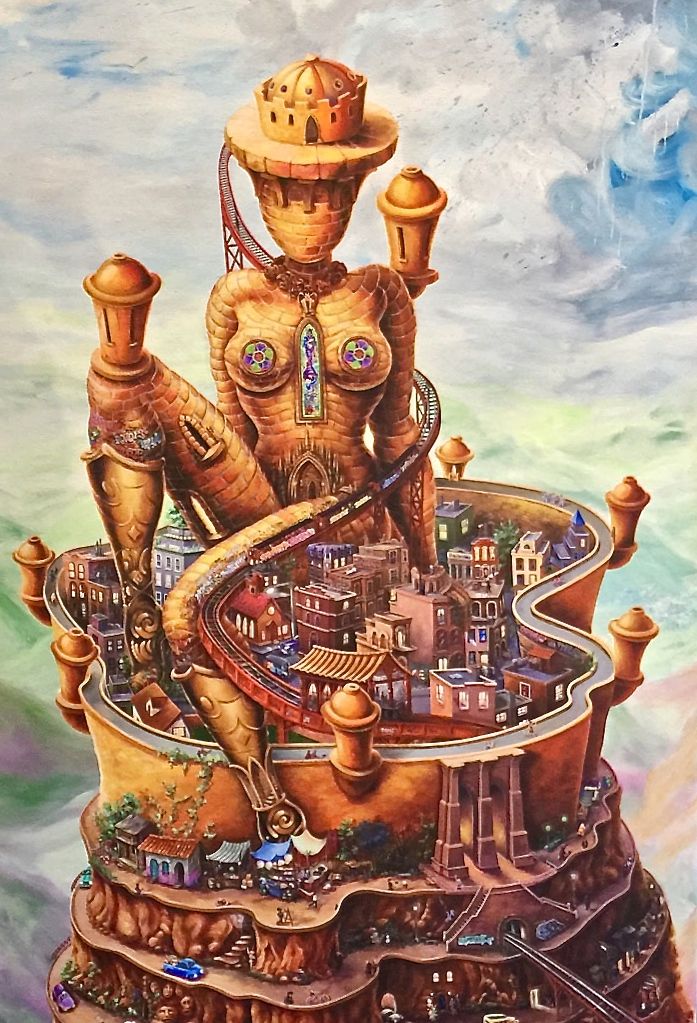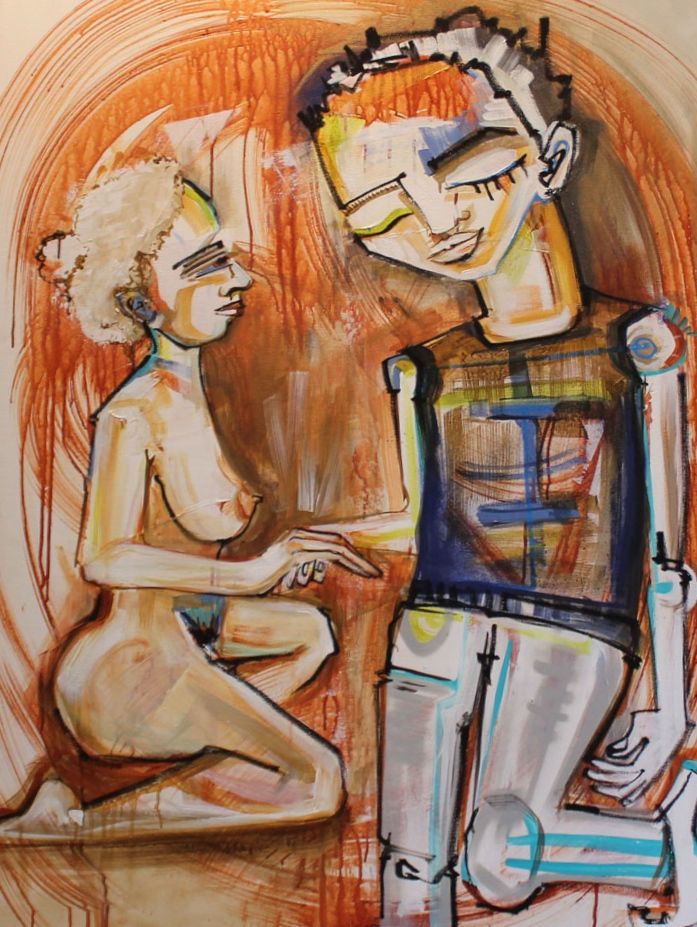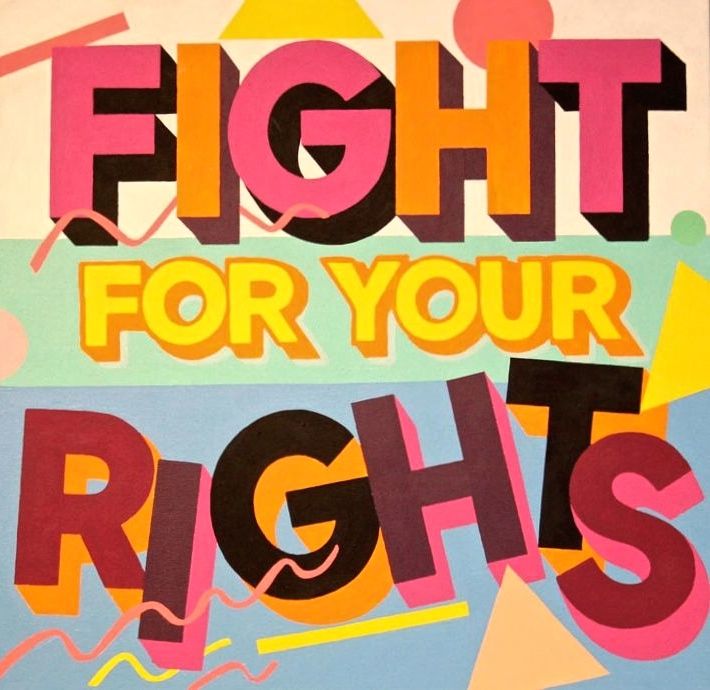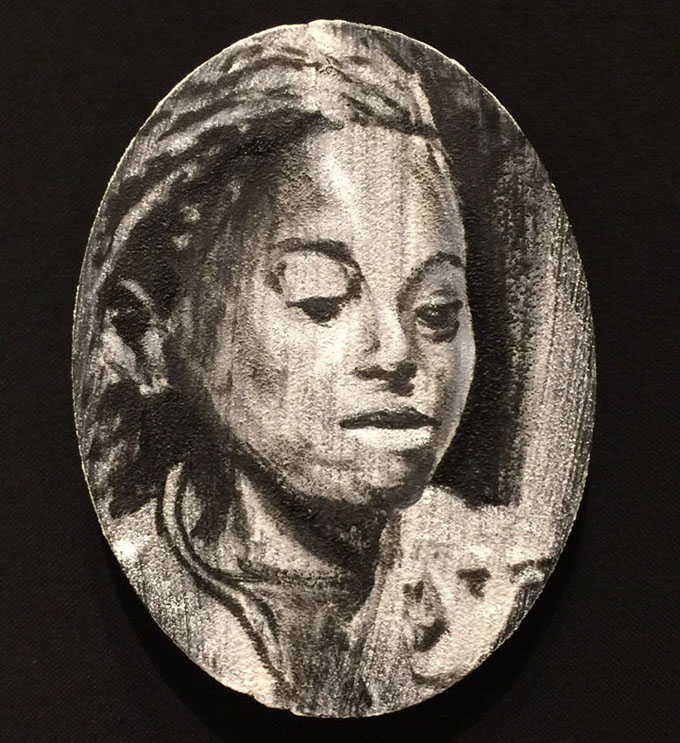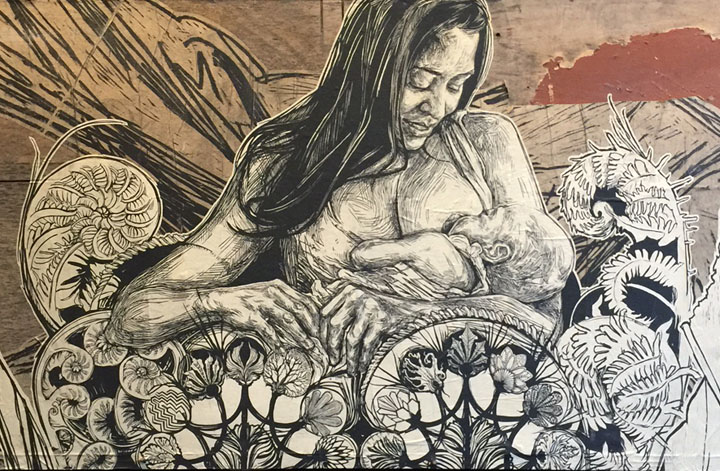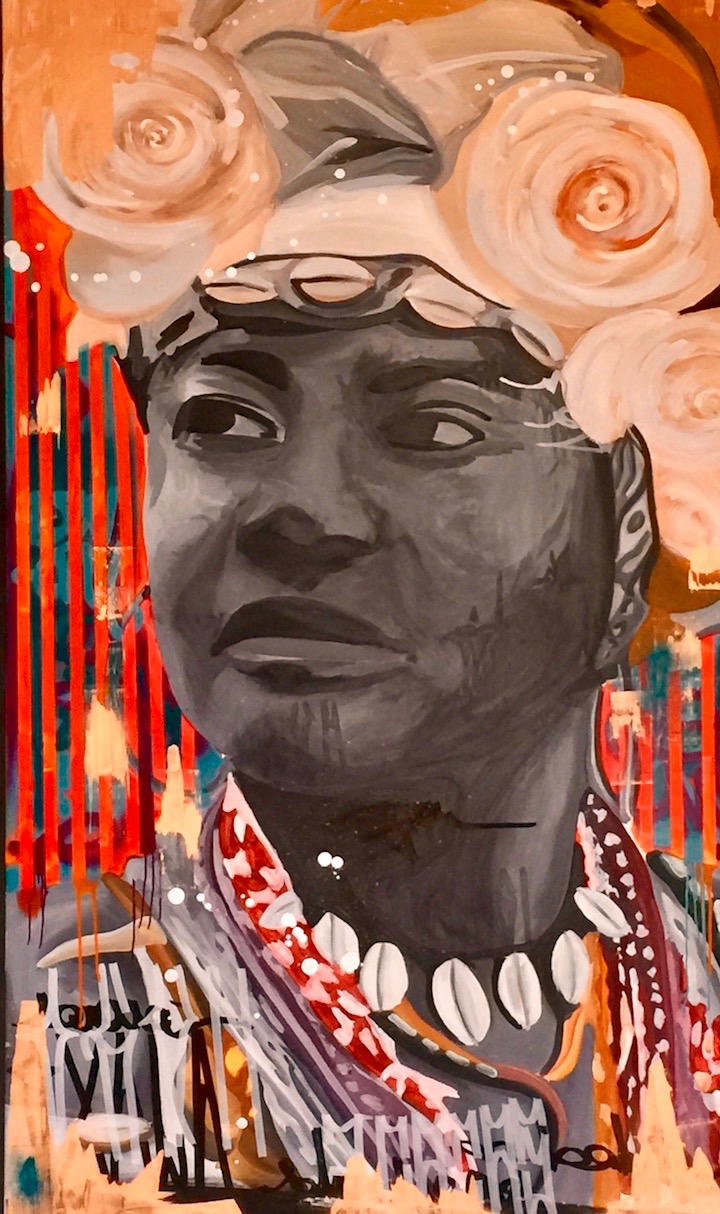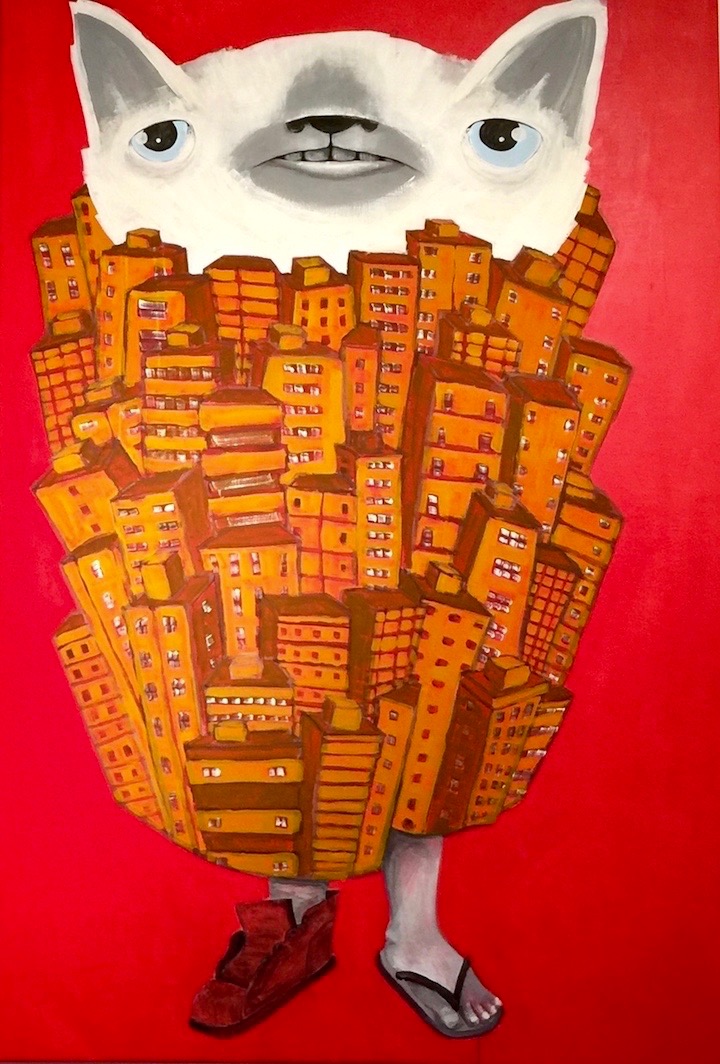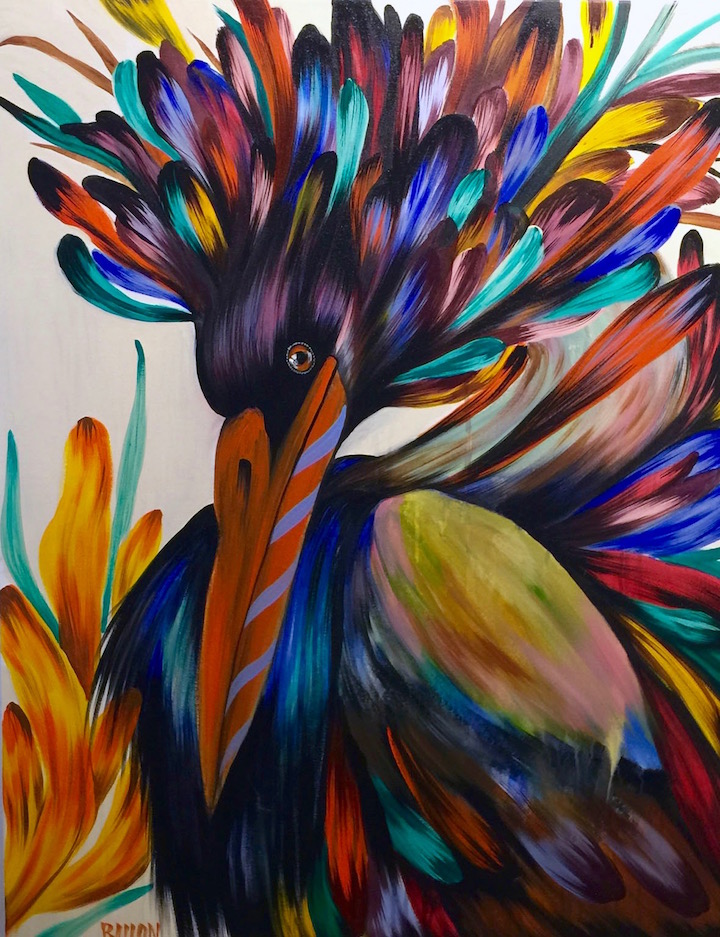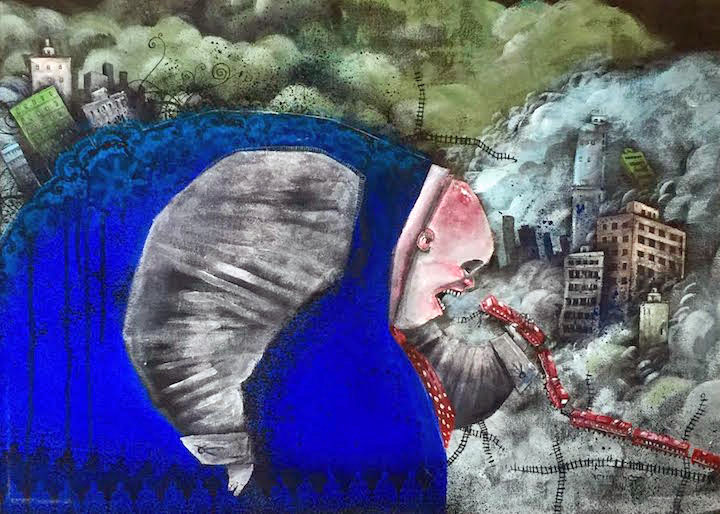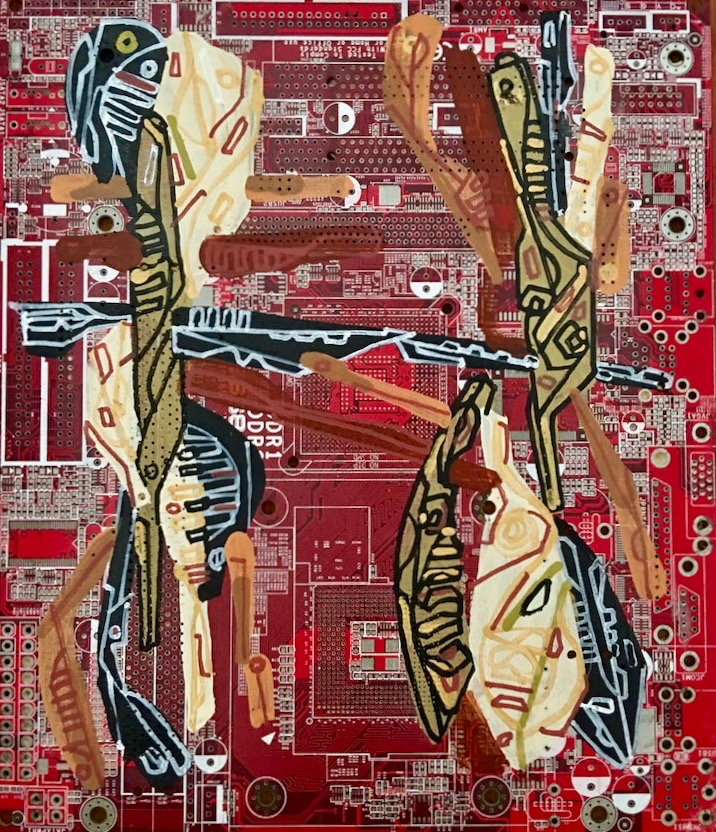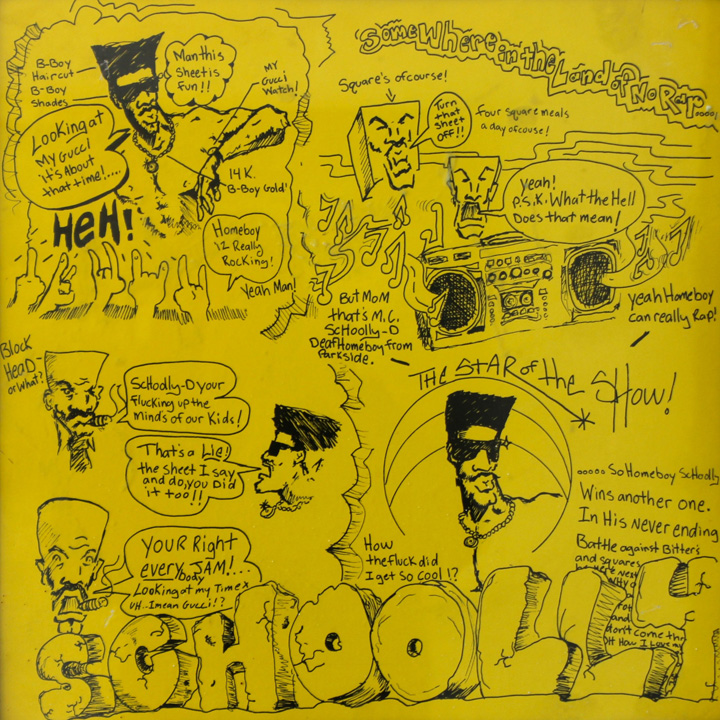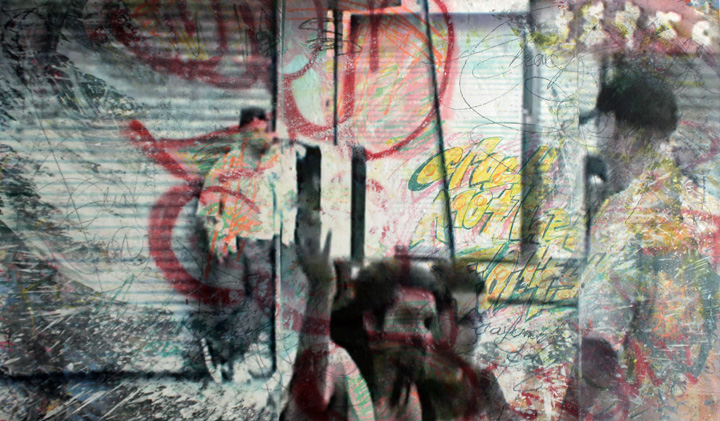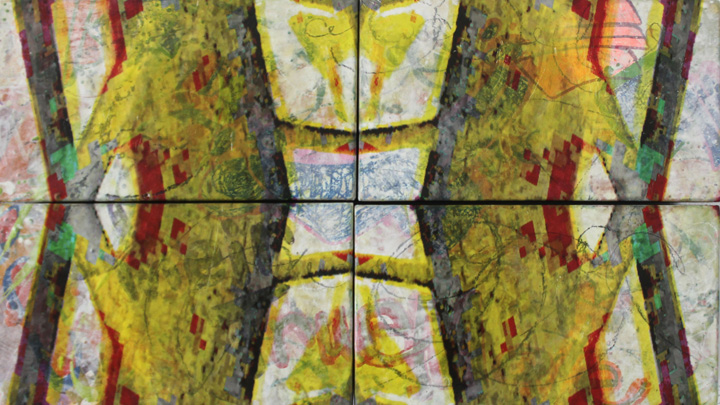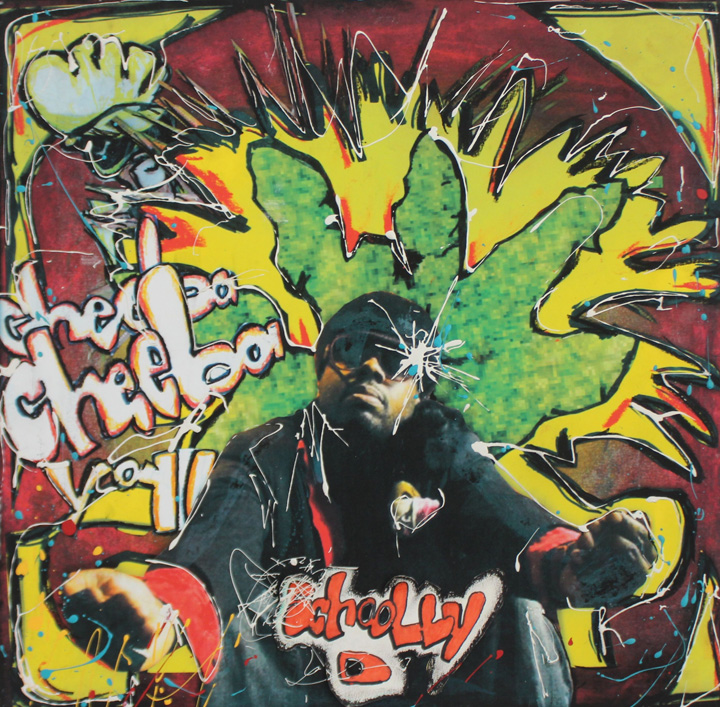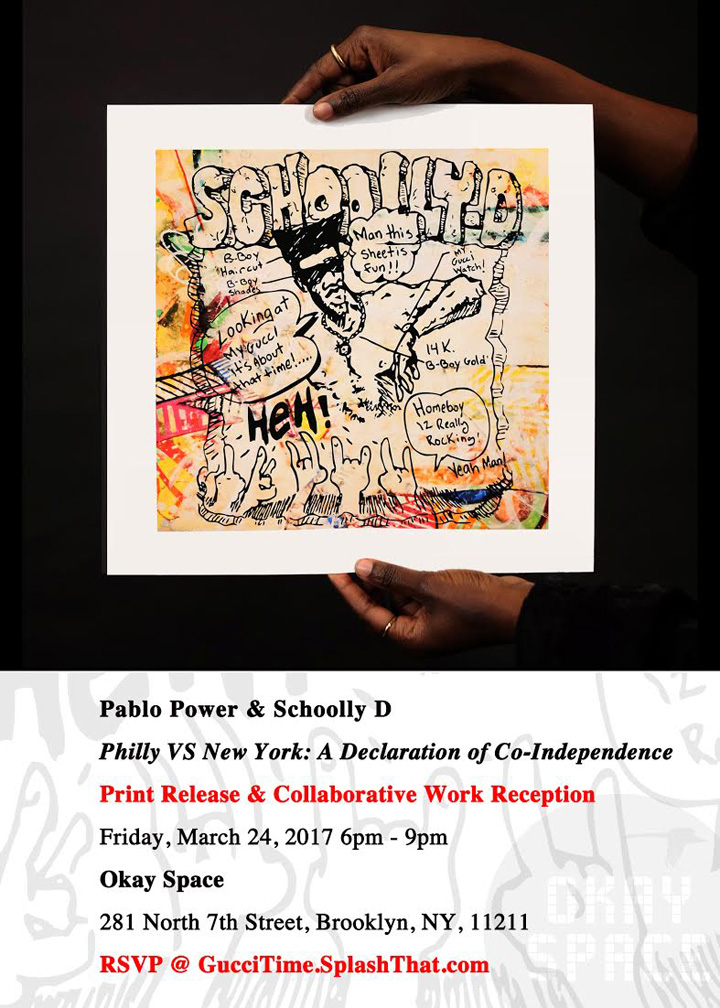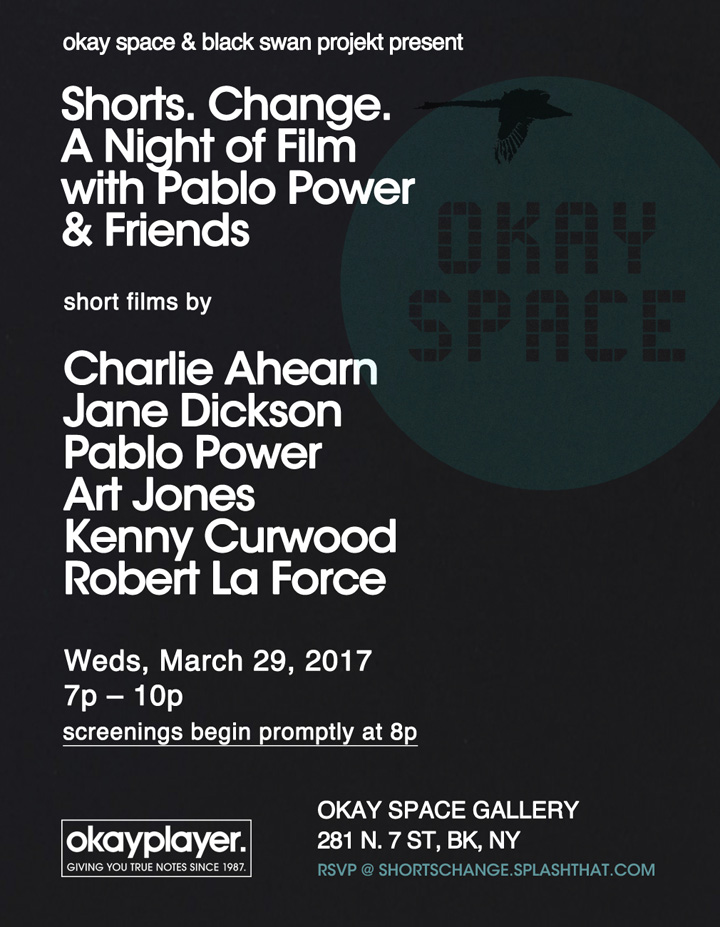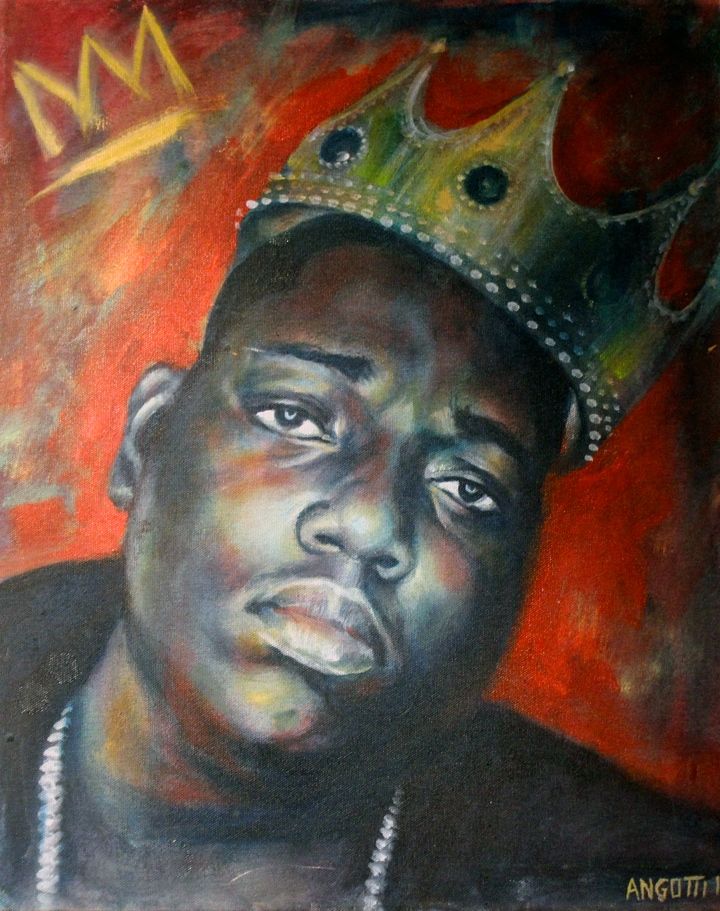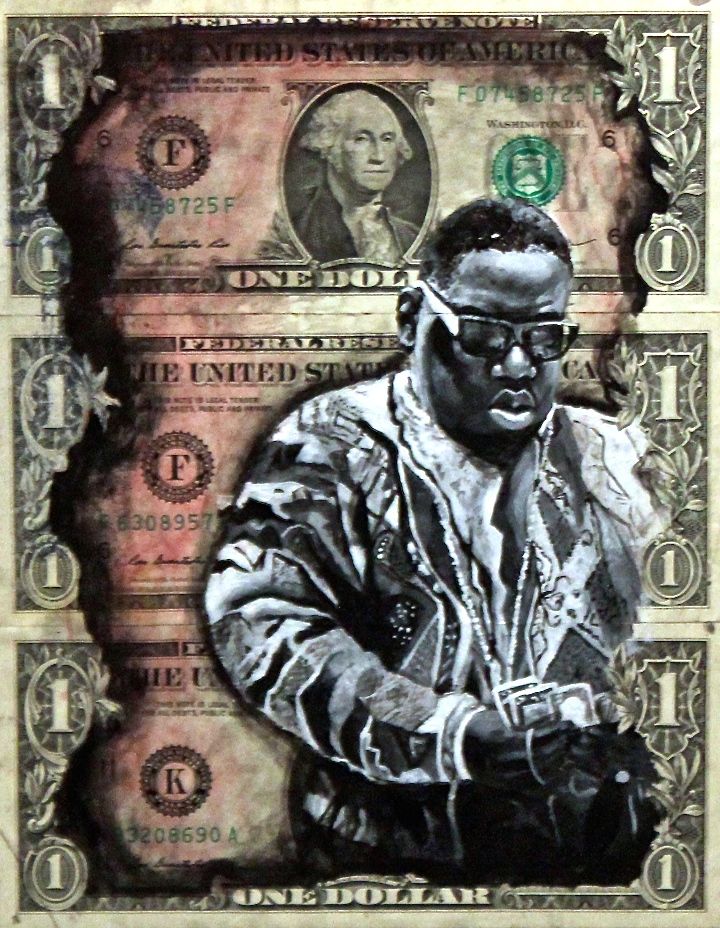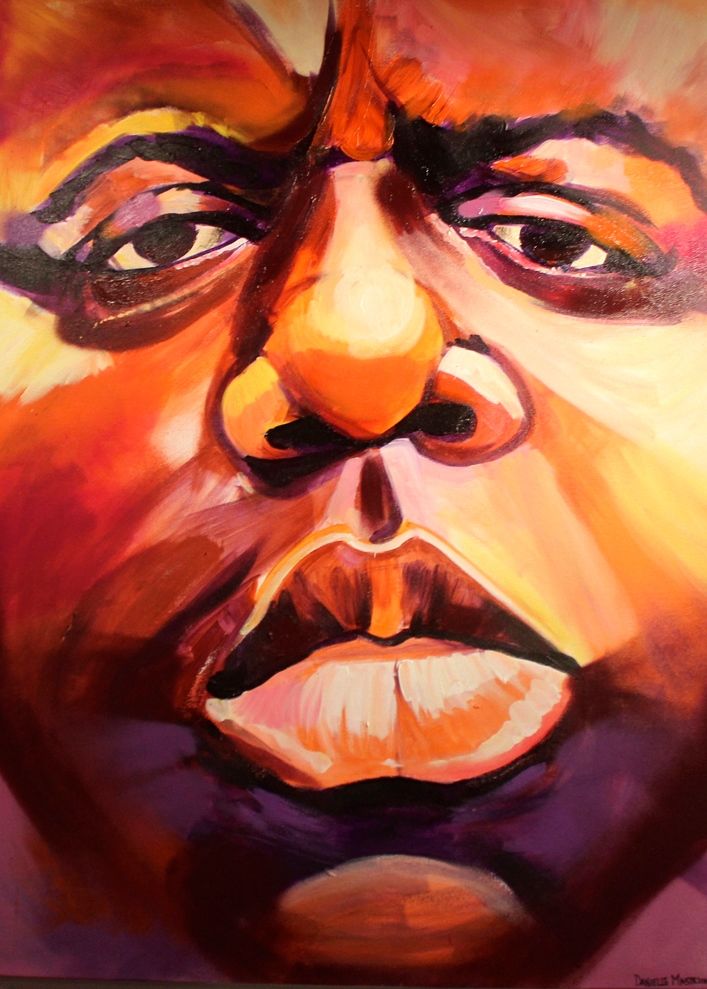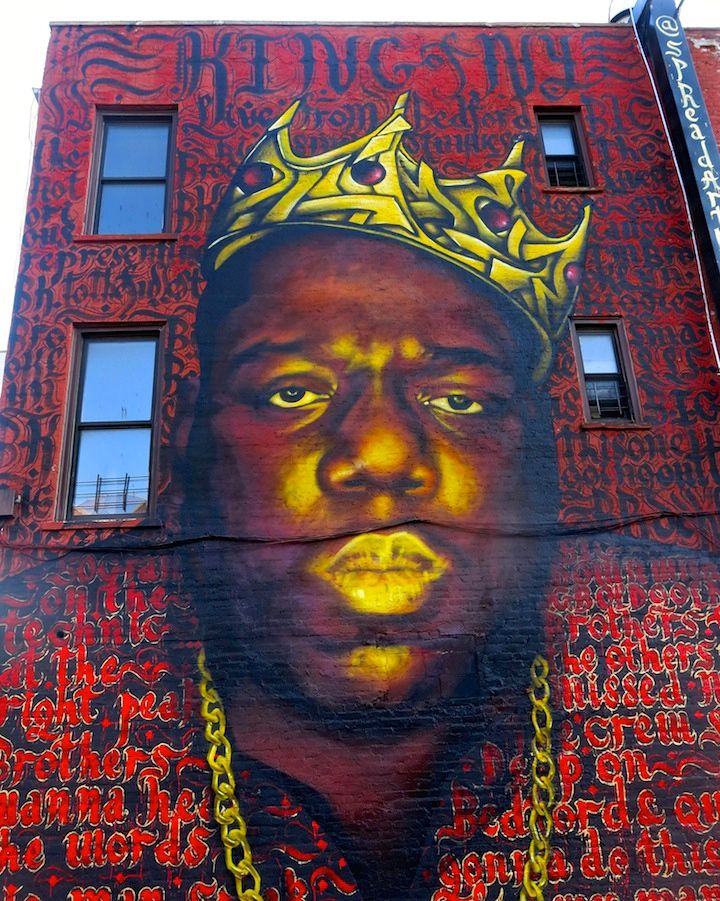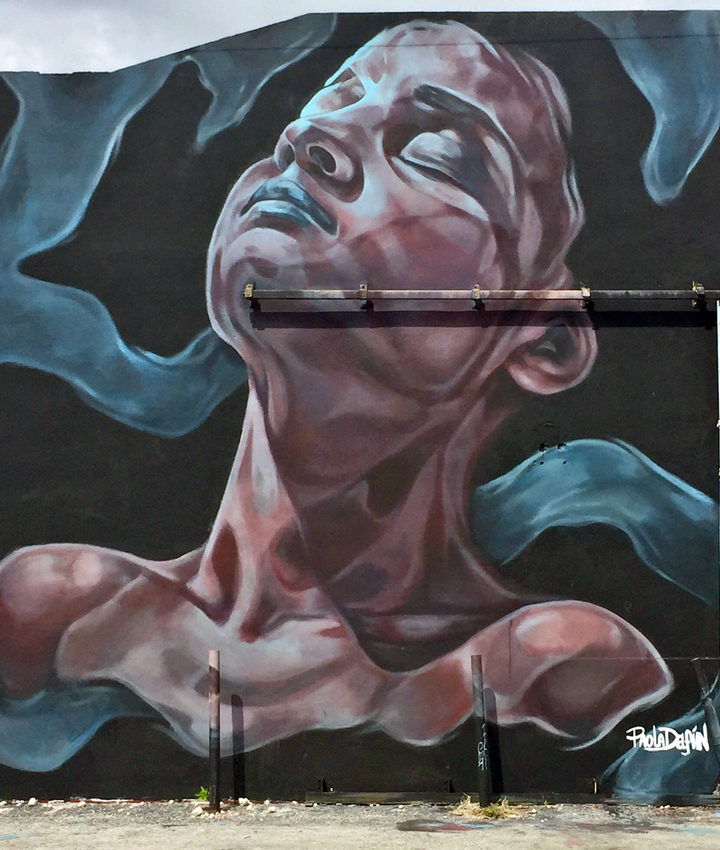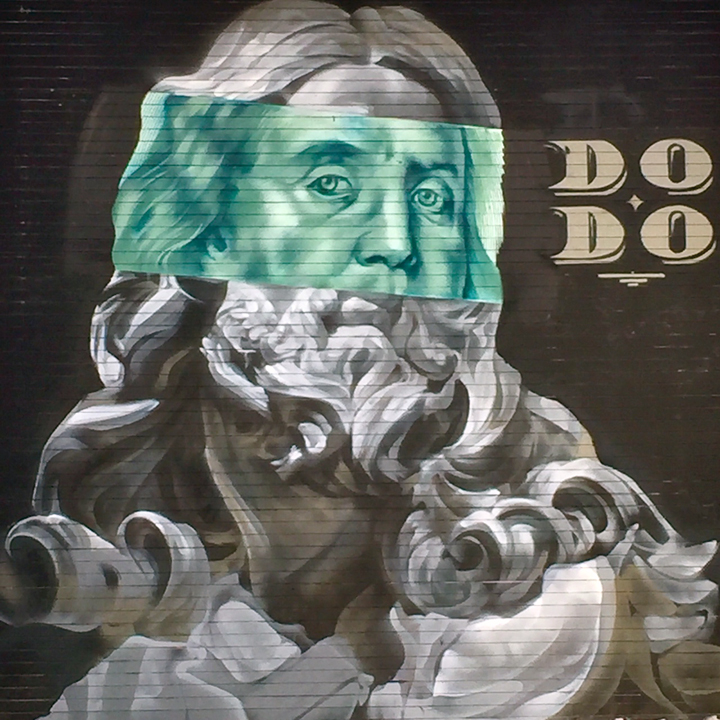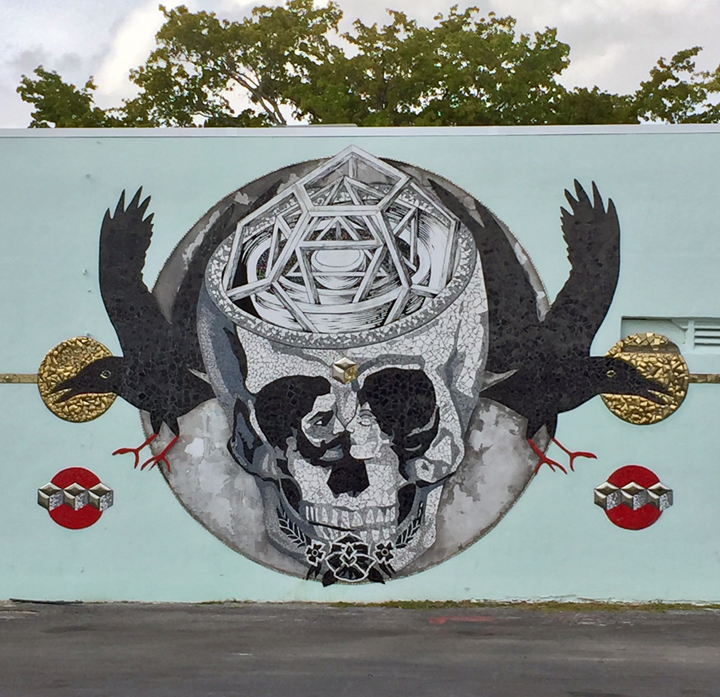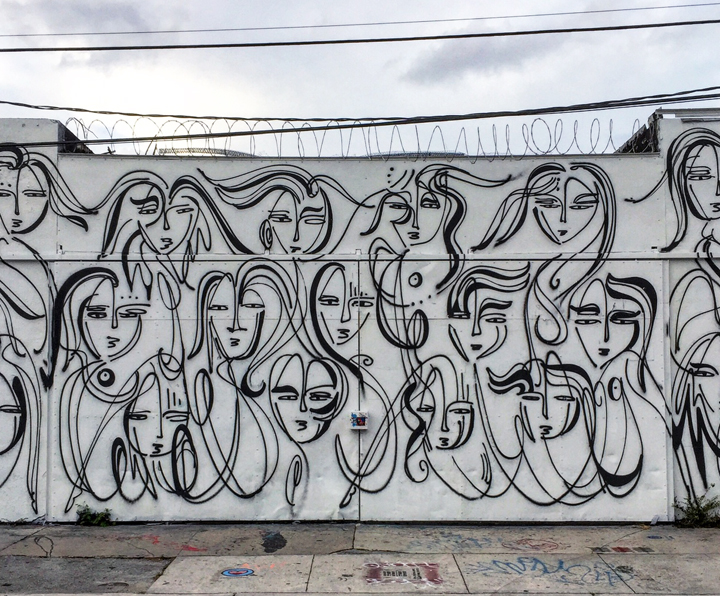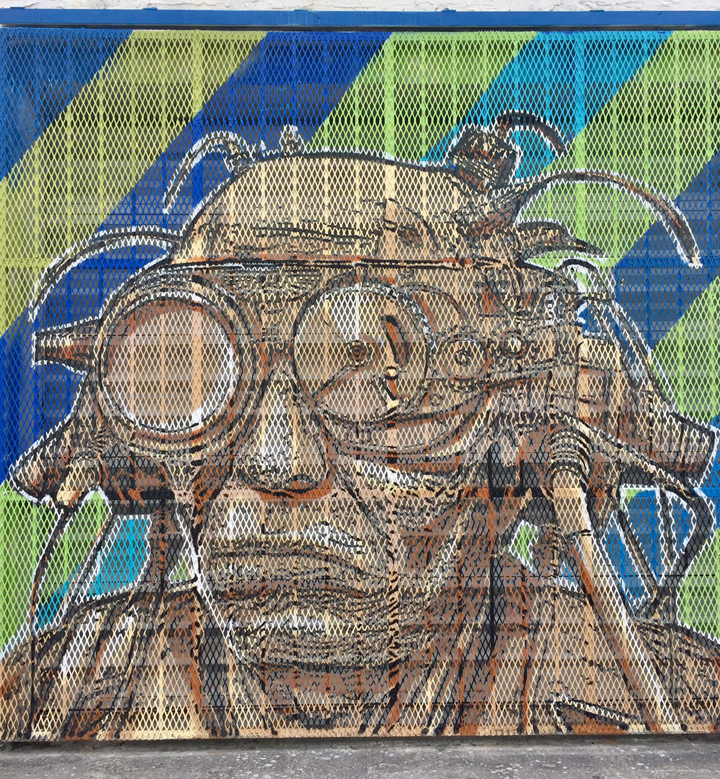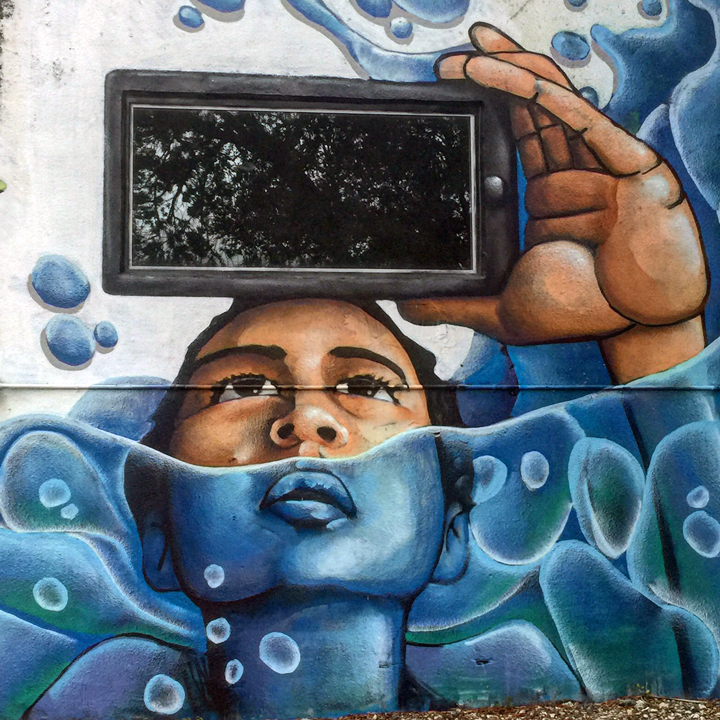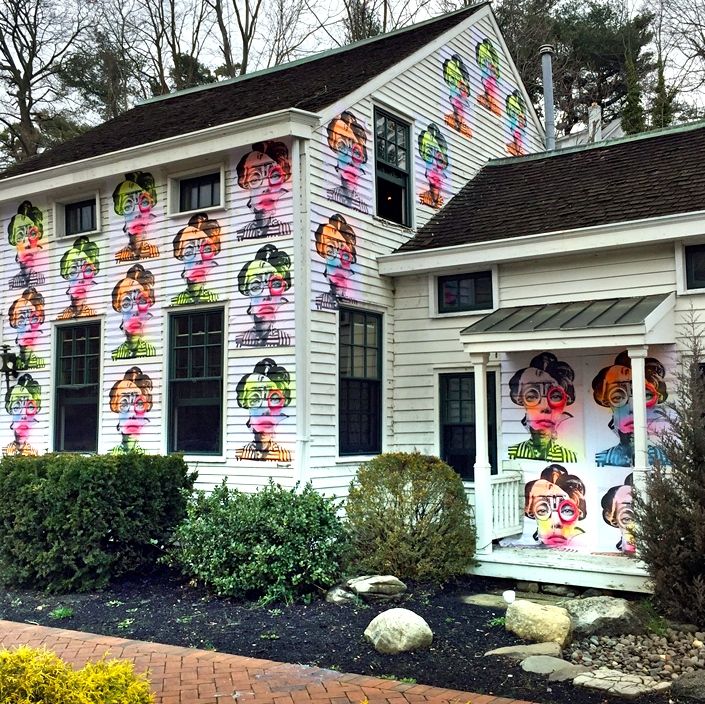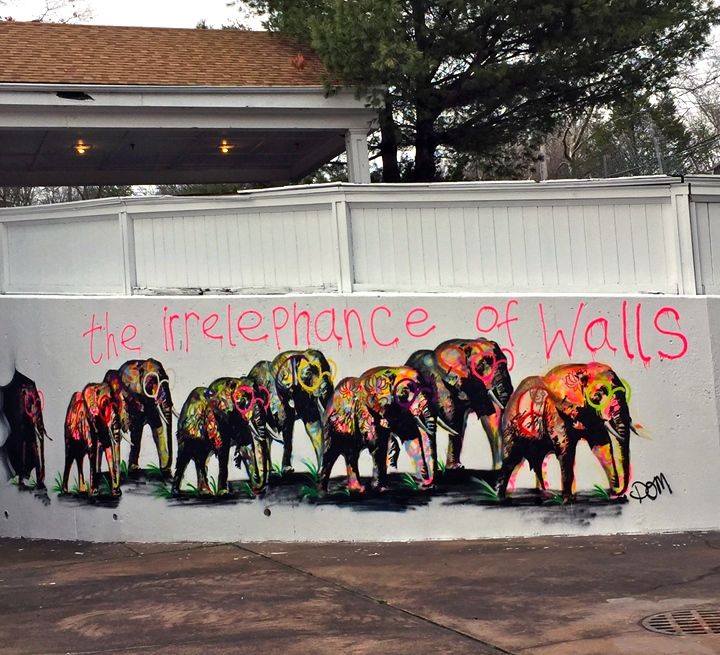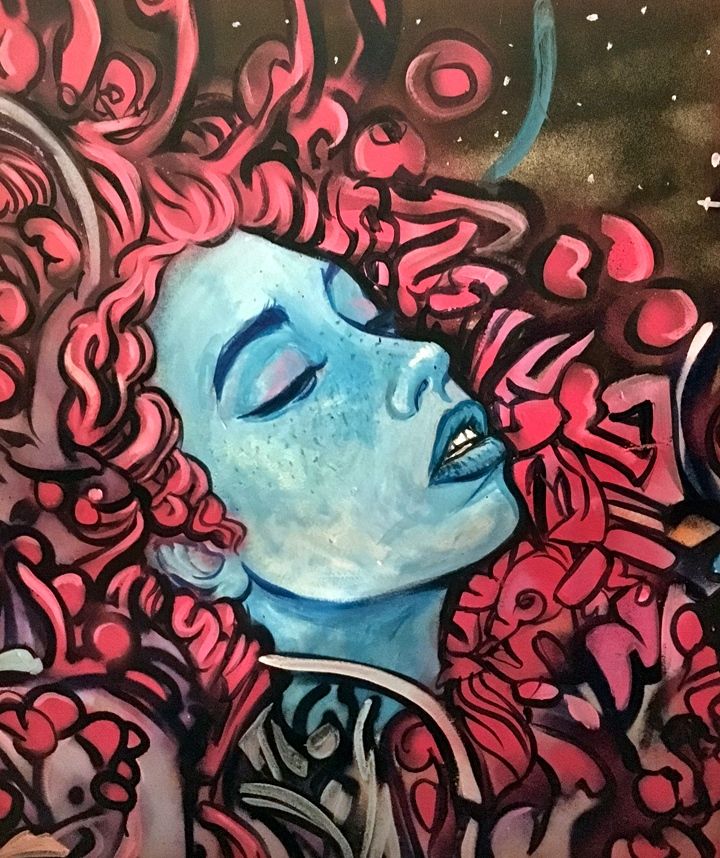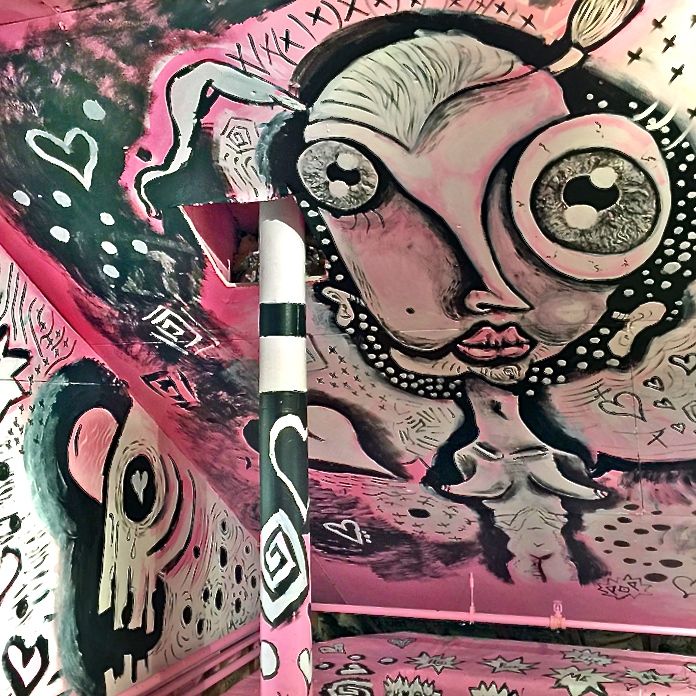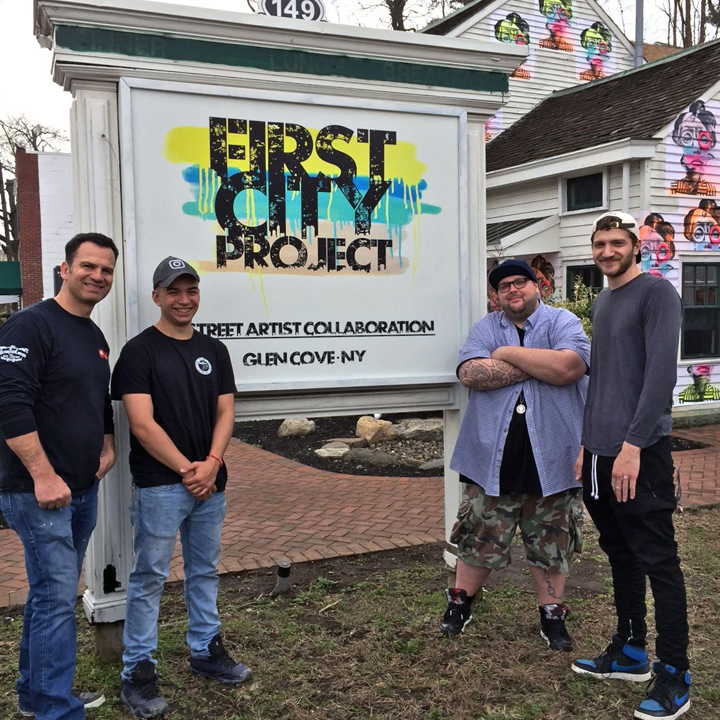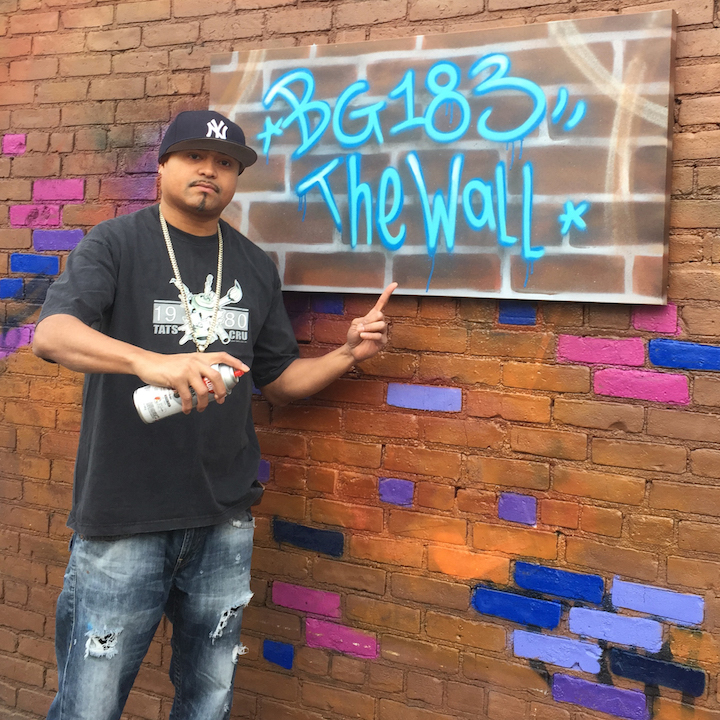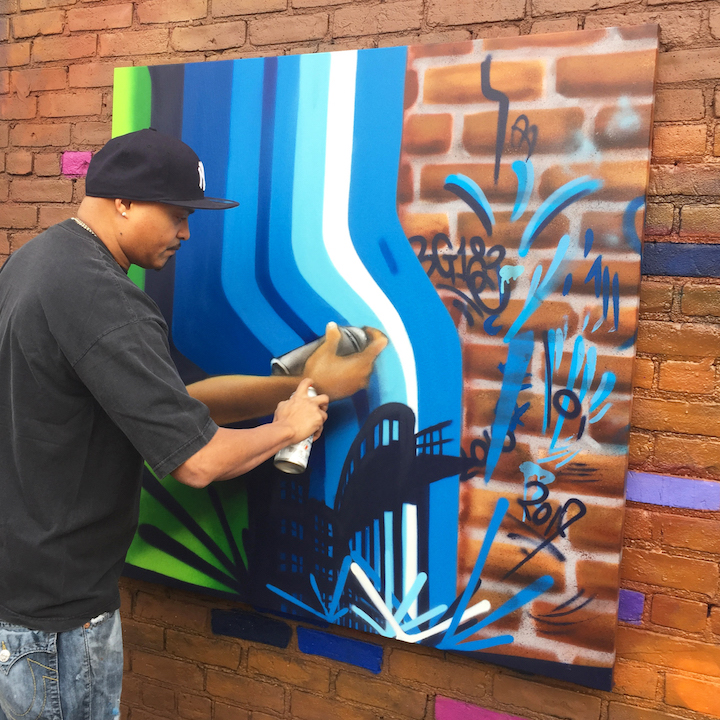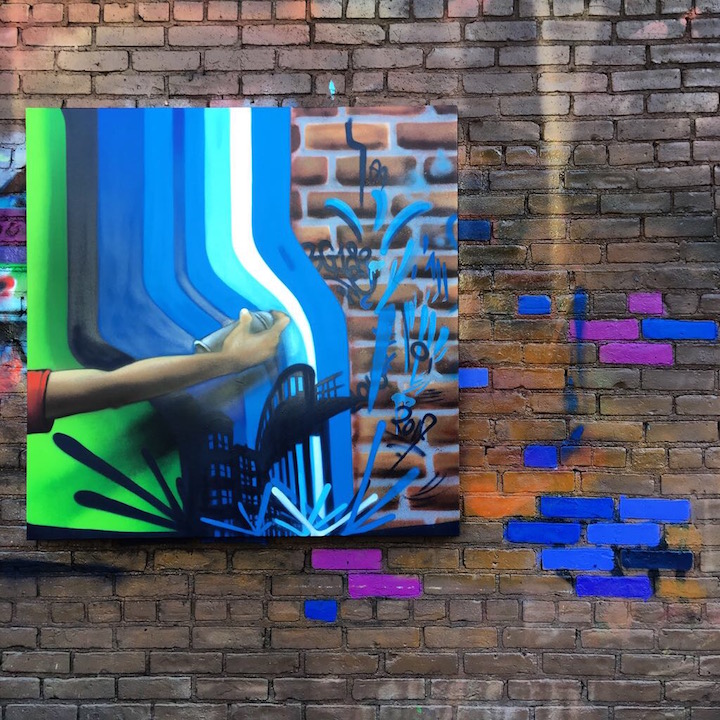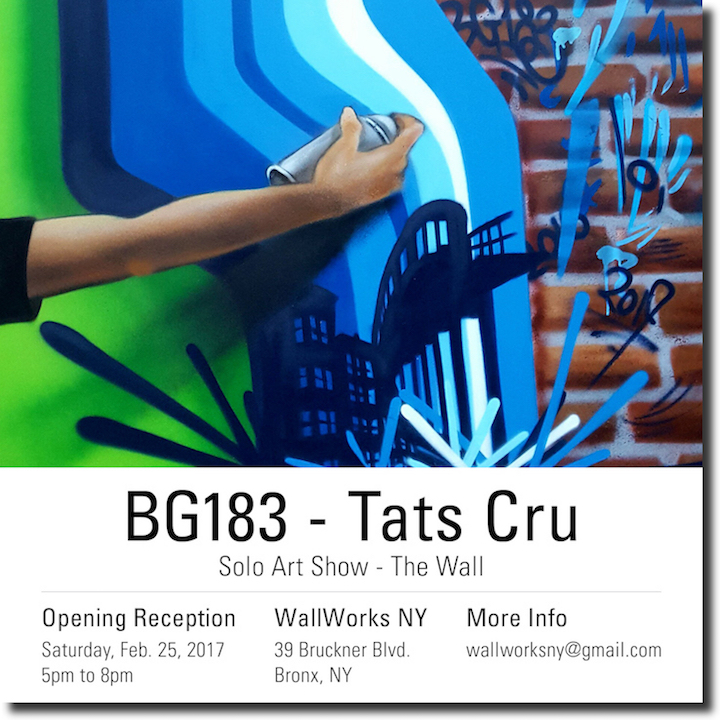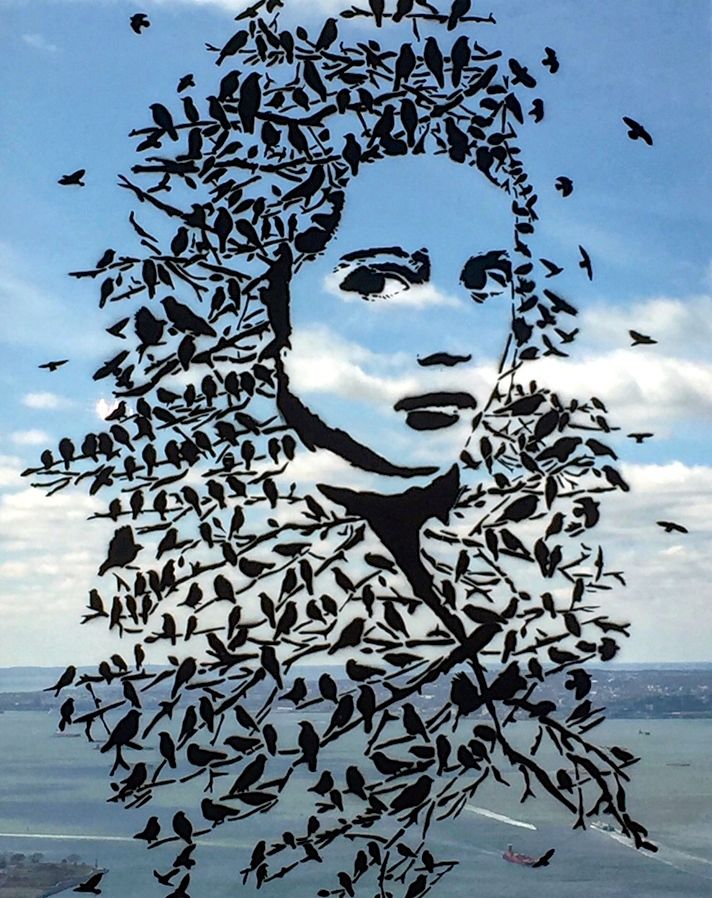
This past Sunday, we had the opportunity to meet up with Joshua Geyer, one of the curators of the current installation on the 69th floor of 4 World Trade Center. Curious about it all, we posed a few questions to him:
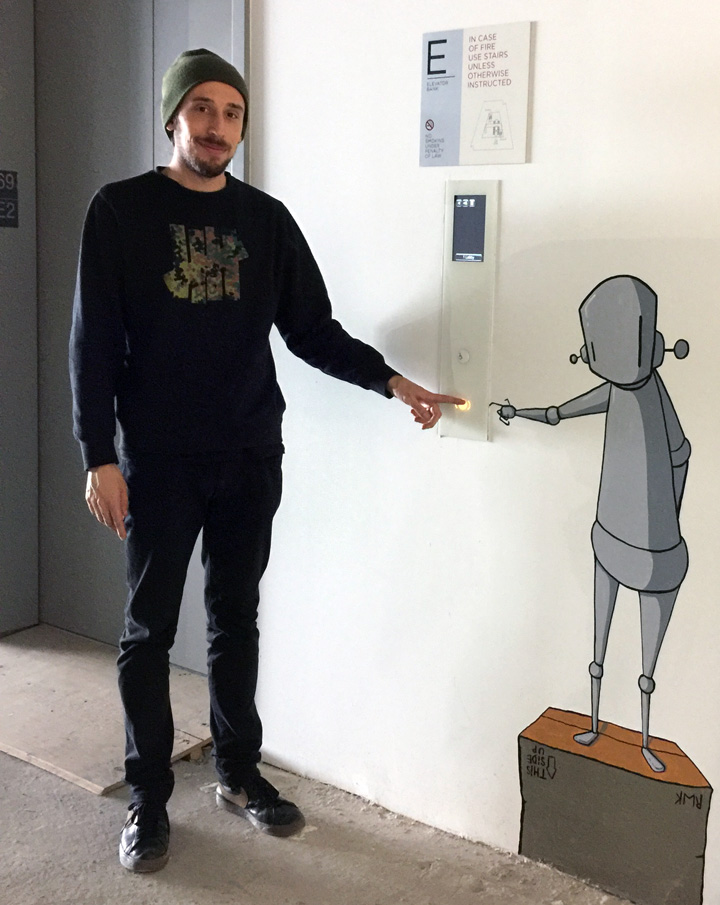
We’ve been seeing more artwork by street artists indoors these past few months — in a wide range of unlikely settings — than on the streets. Whose concept was it to turn this floor into a showcase for street art and graffiti?
Several executives who work in this building had visited the World Trade Gallery awhile back, and they loved the art that was exhibited there. It was their idea to invite street artists to paint on this floor.
And how did you become involved with this project?
Last March, I had curated an exhibit at the World Trade Gallery that featured works by over a dozen street artists. And so I was invited back to work on this project.
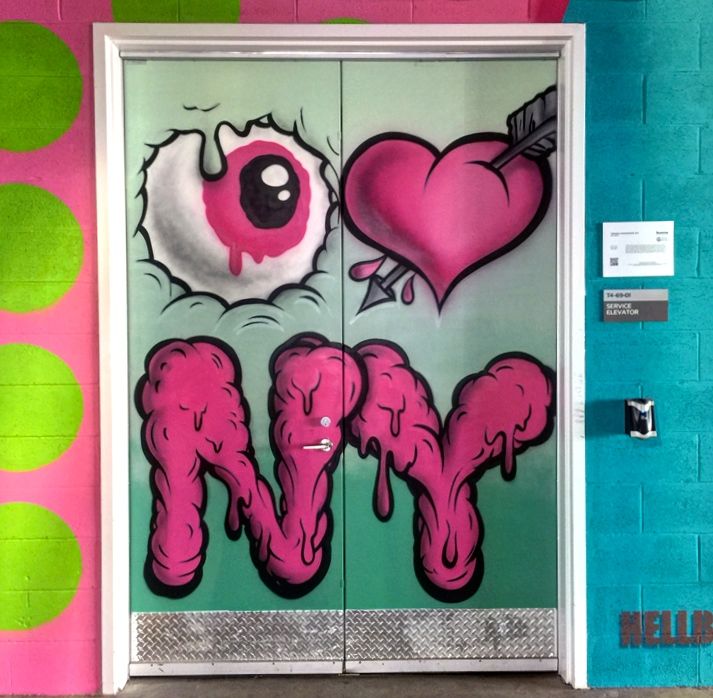
Which of these artists did you, personally, engage in this project?
The artists I invited to paint here include: Icy and Sot, Sonni, Cern, Fanakapan, Rubin, Hellbent, Buff Monster, Chris RWK, Jackfox, UR New York, Erasmo and Basil Sema.
How did you decide which ones to invite?
I chose artists I know — whom I’ve worked with in the past — whose art would work in this particular setting.
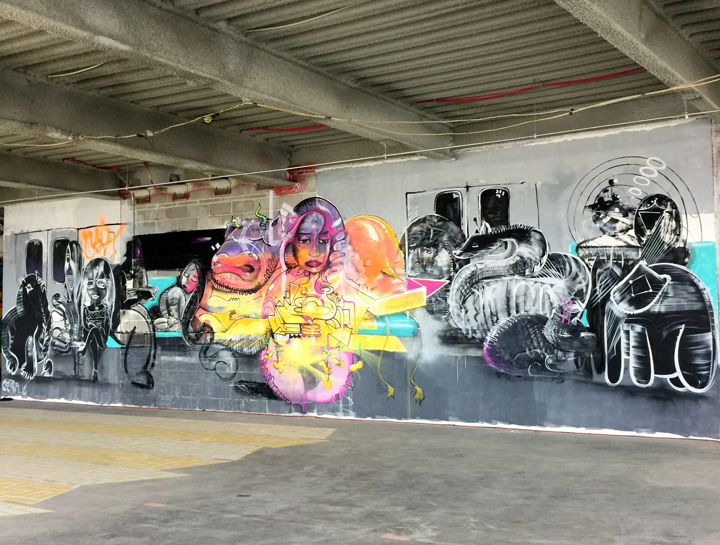
Did this project present any distinct challenges?
This was the first time I’d ever worked with other curators. That was a definite challenge, as we didn’t all have the same vision, and each one of us worked independently. I generally curate on my own. And when I work with Centre-fuge Public Art Project, every decision is made collaboratively, and we are all pretty much on the same page. But I did learn about different approaches to curating a space and navigating my way through different visions.
Who were some of the other curators?
Among them are: Caitlin Crews, Sean Sullivan and Bobby Grandone
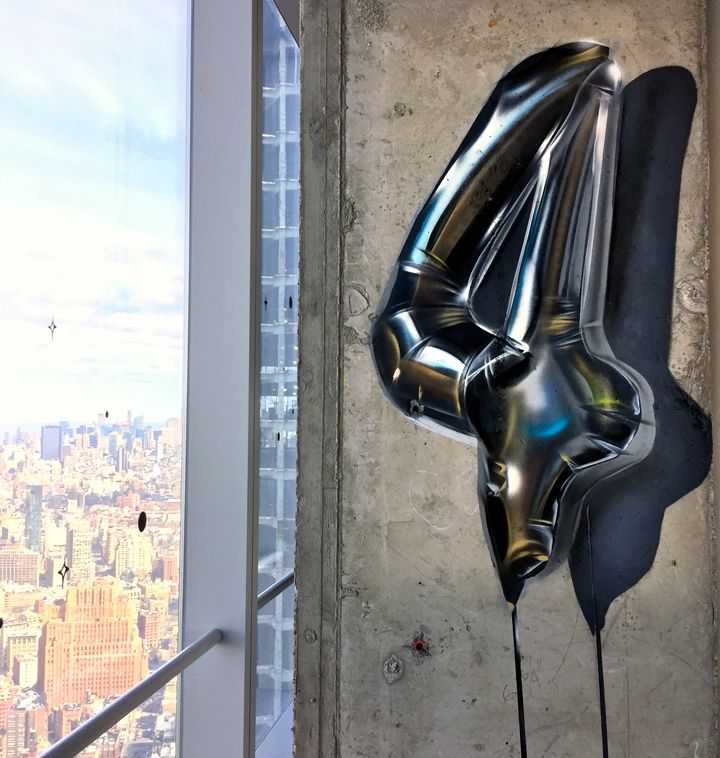
Within the past few weeks, there have been quite a few discussions about the need to financially compensate all artists for work they do within corporate settings. What are your thoughts on this issue?
I absolutely agree. Unfortunately, the art world doesn’t always come through. Creatives can be easily exploited. And if this doesn’t change, we will continue to lose many talented artists. But lots of positive things are happening now in this space.
Can you tell us about that?
Yes. Many students — from local elementary schools to the Parsons School of Design — have visited. They’ve had the opportunity to meet artists and speak to curators, and their response has been great. I look forward to more school visits. And I am hoping, of course, that the artists who painted here will attract clients and gain future opportunities.

How can folks visit this space? Is it ever open to the public?
I will be giving weekly tours. For specific information and to set an appointment, I can be reached at Tower4Arts@gmail.com. I would love to have schools — and art teachers, in particular — reach out to me.
And what about you? What’s ahead for you?
Later this spring I will be joining several artists — including Vexta, Faith47 and Alexis Diaz — on a trip to El Salvador facilitated by the United Nations. I will be doing a photography workshop with kids, and we will be wheat-pasting their photos outdoors. And currently I’m working with No Longer Empty, with plans underway for an exhibit in Brownsville.
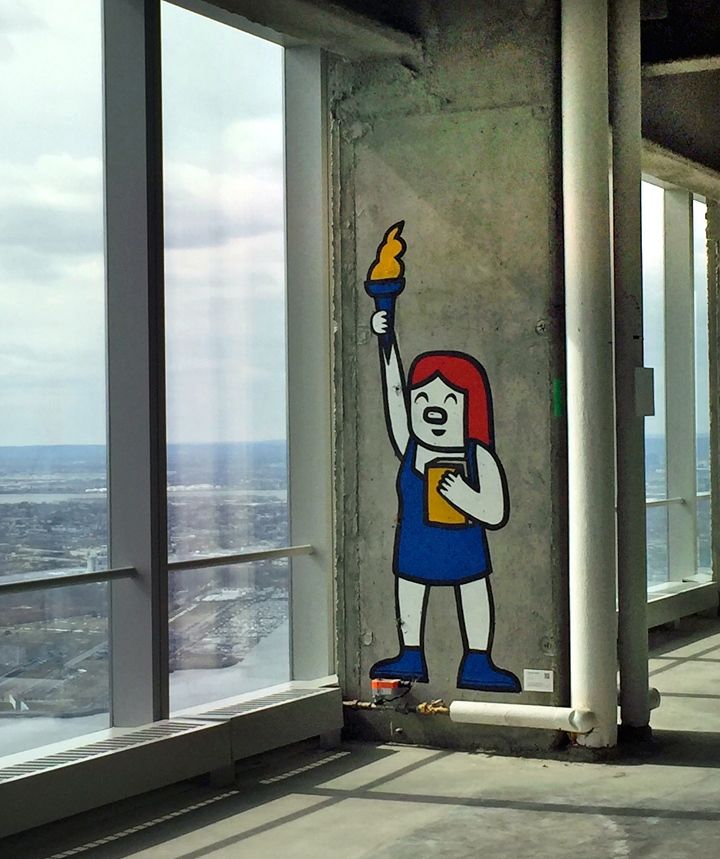
That all sounds great! We’re looking forward to hearing about your experiences.
Note: The images featured in this post were among those curated by Joshua Geyer. Keep posted to the StreetArtNYC Facebook page for additional images of artworks in this space.
Images
1 Icy and Sot
2 Josh standing next to Chris RWK
3 Buff Monster, with fragments of Hellbent to the side
4 Cern
5 Fanakapan
6 Jackfox
7 Sonni
Photos & interview by Lois Stavsky
